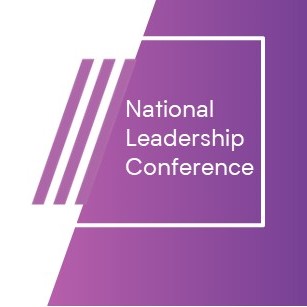Alan Lyons: Building resilience through purpose-led leadership
The tumult of the past year has allowed us to reflect on our leadership, building organisational resilience along the way, says Alan Lyons.
Every year, we experience the “New Year, New You” fanfare, but research suggests that by June less than half of people are still on track to achieve their ‘New You’ goals. Their failure is often put down to a lack of grit. However, I believe there is a problem with developing grit for the sake of grit.
We are inundated with instructions around how to maintain peak performance. Everybody appears to have bought into the ‘High Performance Fiesta’, with grit being lauded as the silver bullet. We even say to our children, ‘no pressure, just do your best!’, the underlying message being that if you maintain peak performance, we will be happy. How much more pressure could you put a child under? Grit has a dark side, as you can stay too long on things you know are not working.
If we take a similar approach to leading, there is no time for recovery, learning or re-thinking. As a leader, reflecting on your purpose is of vital importance. In fact, grit without purpose can lead to an unnecessary white–knuckle ride, often justified as a necessary route for transformational leadership to flourish.
There have been hundreds of articles on how to stay busy and distracted during the boredom of lockdown. The British Psychological Society recently shared research which found that during lockdown, meaningful activity is more fulfilling than simply staying busy. This leads to the question: How can you keep your team focused on meaningful activities?
You can start with clarifying your purpose.
Having a well-crafted and shared purpose is good for wellbeing. French military general Napoleon Bonaparte said that leadership was about being ‘a dealer in hope’, and hope acts as fuel to keep up momentum. While 2021 to date has been a bad year for the ‘ego’, it might have been good for the soul and given us the opportunity to reflect on our leadership purpose and impact. Leading with purpose requires resilience; when a leader finds the sweet spot between grit and purpose, the benefits can be immense.
In Jim Collins’ latest book BE 2.0, he uses the United States War in Vietnam as a case example. The US had an unprecedented success rate (as an army) if you measure their tactical engagements; despite that, they lost. After the war, a 1974 survey of army generals highlighted that 70% were unsure of the nation’s purpose and objectives in Vietnam. Similarly, we all have anecdotes of a sports team with the best individual players who underperform as they fail to unite under a shared common purpose.
As a leader, be honest with yourself about your motive and an authentic purpose will emerge. Simon Sinek popularised searching for your ‘why’ behind the ‘what’. In my work as a business psychologist I have seen this approach take on an inauthentic workshopping process.
Firstly, if you have to go searching for a ‘why’, then you really need to rapidly identify your North Star. There is no point making one up or handing the process over to marketing. New research published in the Journal of Personality and Social Psychology: Interpersonal Relations and Group Processes suggests that companies undermine sacred values like environmentalism when co-opting them for profit or prestige. So, if you sell t-shirts do not claim the reason for doing so is to care for the wilderness – unless that is what you are really trying to achieve.
The following paragraph by Stefan Stern, a management columnist for The Financial Times, illustrates the problems with certain purpose claims:
Companies make grandiose claims about their purpose: Philip Morris’s desire to “make history” and “change the world” with a “smoke-free (but not tobacco-free) future, Facebook’s aim to “build community” (except in Australia?), Airbnb’s “belonging”, and so on.
A good litmus test for a company purpose is if front line workers connect with and understand it.
Ideas for building resiliency through purpose-led leadership:
- Take some time to crystallise your own understanding and thinking of your organisation’s purpose.
- Pay attention to what is going on around you and allow employees to feel meaningfully involved and allowed to critique your understanding (purpose).
- Interact visibly with employees. Zoom around and be seen!
- Bring your team together to create a team vision linked to the common purpose: where are you heading? How will you support team resilience and wellbeing as you go?
- Take the time and trouble to communicate and explain the purpose and decisions to employees. John Kotter believes that “most leaders under communicate the vision by a factor of 10X to 100X.”
- Be flexible and adjust as you go, and don’t be afraid to change tack to remain relevant.
- Lastly, remember your team does not have an inherent right to exist.
Alan Lyons is a business psychologist at KinchLyons and IMI associate on the Professional Diplomas in Strategic Human Resource Management; Coaching; Leadership, and Organisational Development and Change.
For more IMI Insights, go here.













